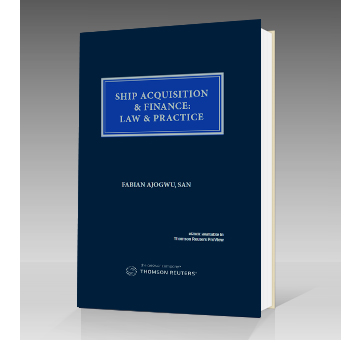There is a correlation between increased global trade and the demand for ships to carry goods, support oil and gas exploration, enhance tourism and leisure among other things. The list is endless. Shipping as capital intensive venture, requires financing from a pool of resources in the form of equity, debt or a hybrid of both. The funding needs do not change in principle whether it is for new ships or used ships. In this book, the expression -ships‟ and „–vessels‟ are used interchangeably for ease of discussion of a range of vessels that operate and provide support to -various sectors of the economy.
Despite the age and growth of the maritime sector, shipping companies continue to face challenges of access to financing of ship acquisitions. Prospective owners can hardly provide the fixed-asset-type securities (used in traditional lending transactions) required by local banks and financial institutions. The limitations imposed by insisting on a fixedasset-type traditional securities like land and building is that where they exist, they can hardly cover the costs of acquisition or a sizeable fraction thereof of sophisticated modern vessels. Bankability and comfort for providers of capital should instead come from, and leverage, the expected or projected streams of cash flows derivable from the projects or contracts that the ship would be procured for the existing legal framework requires improvement to provide for the evolving trends in project financing, unique contracts in oil and gas exploration, transportation, leisure and support services across other sectors.
This book draws from practice experience at Kenna Partners, having advised on the bank financed acquisition of a number of vessels including Nigeria’s first ever locally wholly-owned deep offshore vessel. This book is intended to guide investors and ship merchants on the process of acquiring and strategically registering ships. The statute enabled drive towards local participation in inland coastal trade is a desirable thing as long as there is access to finance to realise the objectives. The reality is that users of ships understandably look at other considerations of equal (if not more) importance to them, such as safety, security, and suitability of the vessel. The opportunities provided by the Coastal and Inland Shipping Act No. 5 of 2003 (Cabotage Act) can only be tapped into where there are ships, and the means to acquire them. It takes careful planning and deal structuring to convert the opportunities into a bankable project, which if properly financed enables seamless acquisition of vessels that are commercially self-sustaining.
In twelve chapters, I have tried to lay out the ship registration procedure, ship financing options, pre-deal negotiation, ship mortgages, liens and other securities, which include maritime liens. I have also tried to discuss the procedure for shipping mortgage, discharge of ship mortgage including power of sale, and financing as well as registration risks. Dispute resolution is discussed extensively in chapter nine of the book. The future of ship registration and financing, as well as prospects for growth and development, and accounting and financial standards are also discussed.
More specifically, chapter eleven covers the documentation required in ship acquisition. It discusses Declaration of Pledge, Deed of Appointment of Trustees, Deed of Covenants Accompanying a Deed of Legal Mortgage of the Ship, Ship Mortgage Deed, Loan Agreement, Power of Attorney and Deed of Legal Mortgage among others. The appendices to the book include actual documentation that include the Memorandum of Agreement, some useful transaction templates, sample Declaration of Pledge, Deed of Appointment of Trustees, Deed of Mortgage, Deed of Covenants Accompanying Deed of Legal Mortgage, Loan Agreement, Power of Attorney and the Coastal and Inland Shipping Act 2003. It is prudent to mention that no two transactions are exactly the same, and it would be advisable for readers to adapt the agreements they use to the specific circumstances that they are faced with, while relying on the advice of their professional advisers.
In writing this book, it was not my intention to provide a comparative survey of all elements of the subject. Rather, my aim was to provide a practical guide on the law and practice of ship acquisition starting from pre-deal negotiations through to the deal, and to registration. I have taken an approach that is driven by the need for a practice-text, as opposed to a textbook, so as to deal with the law and practice on the subject.
All of these have brought depth and meaning to the book. This book lays no claim to perfection as nothing done by a mortal is perfect, and I therefore take full responsibility for any errors of omission or commission that may be found herein.
Professor Fabian Ajogwu, SAN, FCIArb
LL.B (Hons), B.L, LL.M, MBA, Ph.D (Aberdeen)
Lagos Business School
June 1, 2017


